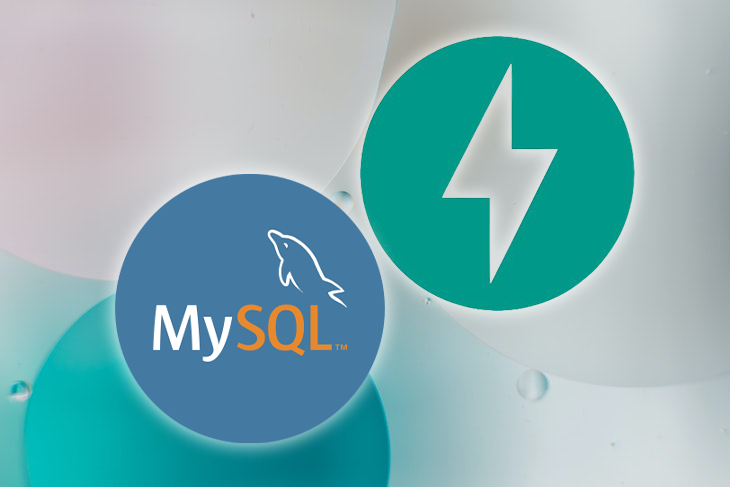
FastAPI is a modern and performant web framework for building APIs, a task that typically requires using a frontend tool to handle the client side. Based on Pydantic and Starlette, FastAPI includes server-side rendering features and type hints for Python ≥ v3.6.0, supporting both the client side and server side. Additionally, FastAPI includes the following features:

Unlike other Python frameworks, like Flask, FastAPI is integrated with SQLAlchemy, which supports database integrations with MySQL, PostgreSQL, SQLite, Oracle, and Microsoft SQL Server.
In this tutorial, we’ll explore server-side rendering with FastAPI by building a simple database for adding and removing movie titles. You can follow along by cloning the GitHub repository for this project. Let’s get started!
The Replay is a weekly newsletter for dev and engineering leaders.
Delivered once a week, it's your curated guide to the most important conversations around frontend dev, emerging AI tools, and the state of modern software.
Let’s start by setting up our application. Our project uses the following structure:
┣ static ┃ ┣ css ┃ ┃ ┣ overview.css ┃ ┃ ┗ style.css ┃ ┗ js ┃ ┃ ┗ script.js ┣ templates ┃ ┣ index.html ┃ ┗ overview.html ┣ .gitignore ┣ database.py ┣ main.py ┣ model.py ┣ requirements.txt ┗ schema.py
In the static directory, we’ll store static files. templates is the directory for our HTML pages, and database.py is a file for our database connections. The model.py file is for our database models, and the schema.py file is for our database schema.
It’s good practice to create isolated Python environments for your Python project. To ensure that you have virtualenv installed, run the command below:
pip install virtualenv
Now, create a new directory called server-side-rendering-with-fastapi. Navigate to it and use the command below to create a virtual environment:
python3 -m venv env
To activate the virtual environment we just created, run the command below:
source env/bin/activate
Now, let’s install the necessary packages for our project. We will use Uvicorn as our ASGI development server, Jinja2 as our template engine, and python-multipart to receive form fields from the client:
pip install fastapi uvicorn jinja2 python-multipart
With our project set up, we can create our FastAPI server. Create a main.py file in the project’s root directory and add the following code to it:
from fastapi import FastAPI
app = FastAPI()
@app.get("/")
def read_root():
return {"message": "welcome to FastAPI!"}
Then, run the server with the command below:
uvicorn main:app --reload
The --reload flag tells Uvicorn to reload the server whenever new code is added to the application. Next, open your browser and navigate to http://127.0.0.1:8000, where you’ll see a JSON response similar to the following message:
{"message": "welcome to FastAPI!"}
Now that we’ve set up our FastAPI server, let’s get started with the SQLAlchemy ORM (Object Relational Mapper) and create a database. Let’s install SQLAlchemy and MySQL Connector/Python:
pip install sqlalchemy mysql-connector-python
In your terminal, run the following command to create a database in your MySQL database:
//Login to MySQL mysql -u root -p //Create database named serversiderendering CREATE DATABASE serversiderendering;
In your project’s root directory, create a database.py file. We’ll import SQLAlchemy create_engine, declarative_base, and sessionmaker. We’re using MySQLConnector to connect to our database, so our connection string will look like the following code:
>DATABASE_URL = "mysql+mysqlconnector://root@localhost:3306/serversiderendering"
We can connect to our database using the create_engine function we just imported from SQLAlchemy. We’ll also import the sessionmaker function, which creates a session for eliminating security issues in our application.
However, the session will not be created until a Sessionlocal class instance is created from the sessionmaker. We’ll disable autocommit and autoflush, then bind the database engine to the session.
The declarative_base class, which we’ll use to create our application’s database model, is also required for our database connection. Add the code below to database.py:
from sqlalchemy import create_engine from sqlalchemy.ext.declarative import declarative_base from sqlalchemy.orm import sessionmaker DATABASE_URL = "mysql+mysqlconnector://root@localhost:3306/serversiderendering" engine = create_engine(DATABASE_URL) SessionLocal = sessionmaker(autocommit=False, autoflush=False, bind=engine) Base = declarative_base()
Let’s build a SQLAlchemy database model now that our application is connected to our MySQL database. To begin, create a model.py file in your project’s root directory. Each attribute of our database is represented by a Column in SQLAlchemy. We’ll import Column and pass a SQLAlchemy class type, like Integer, String, Text, or Boolean as an argument defining the type in the database.
To create the SQLAlchemy models, we’ll import and use the Base class from our database.py file. Then, add the __tablename__ attribute to the Movie class, telling SQLAlchemy what name to use in the database for our model.
To receive unique data, we add the unique parameter to our name field, make ID the primary_key, and index it. Add the code below to model.py:
from sqlalchemy.schema import Column
from sqlalchemy.types import String, Integer, Text
from database import Base
class Movie(Base):
__tablename__ = "Movie"
id = Column(Integer, primary_key=True, index=True)
name = Column(String(20), unique=True)
desc = Column(Text())
type = Column(String(20))
url = Column(String(100))
rating = Column(Integer)
Now, our database model has been configured, but we still need to create a schema for our model, which will read data and return it from the API. To achieve this, we’ll create a Pydantic schema for our model.
First, we’ll define our model validations, ensuring that the data coming from the client side is the same data type as the field we defined. Next, Pydantic’s orm_mode will instruct the Pydantic model to read the data as a dictionary and as an attribute.
Create a schema.py file in your project’s root directory and paste the code below into it:
from datetime import date
from pydantic import BaseModel
class Movie(BaseModel):
id = int
name = str
desc = str
type = str
url = str
rating = str
class Config:
orm_mode = True
Now, let’s go back to our main.py file and import the database, schema, SessionLocal variable, database engine, and model:
import schema from database import SessionLocal, engine import model
Then, we’ll create our table by calling the model.Base.metadata.create_all() function and bind our database engine to it:
model.Base.metadata.create_all(bind=engine)
Finally, we’ll create a get_database_session() function in main.py, which will create and close the session in all of our routes:
def get_database_session():
try:
db = SessionLocal()
yield db
finally:
db.close()
Now, we’ll create HTML pages and render them to the client. First, we’ll create a template folder in our project’s root directory to store our templates.
To render the pages, we’ll need to add some configurations to our server. In main.py, we’ll import Jinja2Templates from FastAPI to configure our template and StaticFiles to configure our static files:
from fastapi.staticfiles import StaticFiles from fastapi.templating import Jinja2Templates
We’ll use the FastAPI mount method to add the static files to our application, which requires the file path, directory, and a name for the static files:
app.mount("/static", StaticFiles(directory="static"), name="static")
templates = Jinja2Templates(directory="templates")
Then, create a static/css/style.css file in your project’s root directory and add the following custom styles to it:
body{
background-color:rgb(236, 234, 232);
}
img {
width: 100%;
border-radius: 10px;
}
.image{
width: 30%;
}
.details{
width: 70%;
margin: 12px
}
.card {
border-radius: 20px;
}
You can also save your JavaScript image folders and files in the static folder to render them to the client. Lastly, let’s create index.html and overview.html files in the templates directory. Add your HTML document to these files.
Now that we’ve created and configured our templates, let’s render them to the client. To begin, we must create a route for the index and overview pages. In main.py, we’ll import Depends and Request from FastAPI, Session from SQLAlchemy, and HTMLResponse from FastAPI responses:
from fastapi import FastAPI, Depends, Request from sqlalchemy.orm import Session from fastapi.responses import HTMLResponse
You have to pass the request as part of the key-value pairs in the context for Jinja2 in your request handler function, along with the database session, which will be dependent on the get_database_session() function we created to manage our session across our routes. Then, we’ll query our database to retrieve our movies and render them with our index.html template.
The overview route accepts a request parameter, which is used to query the database for the specific data using the filter method. Then, it returns the first occurrence of the queried items. You can learn more about database queries in the FastAPI documentation.
When a request is made to these endpoints, we return a TemplateResponse to the client with the movie object. Update your main.py file with the code below:
@app.get("/movie", response_class=HTMLResponse)
async def read_movies(request: Request, db: Session = Depends(get_database_session)):
records = db.query(Movie).all()
return templates.TemplateResponse("index.html", {"request": request, "data": records})
@app.get("/movie/{name}", response_class=HTMLResponse)
def read_movie(request: Request, name: schema.Movie.name, db: Session = Depends(get_database_session)):
item = db.query(Movie).filter(Movie.id==name).first()
print(item)
return templates.TemplateResponse("overview.html", {"request": request, "movie": item})
In our index.html file, we’ll load our static file and display our data using Jinga2. We use url_for to load our static file with a Jinja tag, passing the static file name and the path to the file:
<link href="{{ url_for('static', path='/style.css') }}" rel="stylesheet">
Then, we’ll loop through our movie objects and display them on our HTML page. Currently, we haven’t added any movies yet:
<div class="col-md-4 mb-2">
<div class="card">
<div class="card-body d-flex flex-row justify-content-between align-items-center">
<div class="image mb-2">
<img src="{{movie.url}}" alt="">
</div>
<div class="details">
<a href="/movie/{{movie.id}}"> <h4>{{movie.name}}</h4></a>
<div class="footer d-flex flex-row justify-content-between align-items-center">
<h6>{{movie.type}}</h6>
<h6>{{movie.rating}}</h6>
</div>
</div>
</div>
</div>
</div>
Now that we’ve successfully rendered our template on the client side, let’s create an HTML form that enables us to save movies to the database. First, we need to create an HTML form in index.html:
<form action="/movie/" method="POST" enctype="application/x-www-form-urlencoded">
<div class="row">
<div class="col-md-6">
<label for="">Movie Name:</label>
<input type="text" class="form-control" id="email" name="name" />
</div>
<div class="col-md-6">
<label for="">Image URL:</label>
<input type="text" class="form-control" name="url" />
</div>
<div class="col-md-6">
<label for="">Type:</label>
<select name="type" id="" class="form-control">
<option value=""></option>
<option value="movie">movie</option>
<option value="series">series</option>
</select>
</div>
<div class="col-md-6">
<label for="">Rating:</label>
<input type="number" class="form-control" name="rate" min="18" />
</div>
<div class="col-md-12">
<label for="">Description:</label>
<textarea name="desc" rows="5" class="form-control"></textarea>
</div>
<div class="col-md-6">
<button type="submit" class="btn btn-info mt-4">Save</button>
</div>
</div>
</form>
When sending data to FastAPI, always encode your HTML form with the application/x-www-form-urlencoded.
Before we can use the form in our application, we’ll need to import Form from FastAPI and RedirectResponse from Starlette into our main.py file:
from fastapi import Depends, FastAPI, Request, Form from starlette.responses import RedirectResponse
Next, we’ll create a request handle, configure our form, and validate it with our database schema. Then, we’ll create an instance of our movie model, passing the data from the user to the model. Finally, we’ll add and save records to the database using the db.add and db.commit methods.
We’ll redirect the user back to the root route of our application using the FastAPI RedirectResponse function, which accepts a URL and a status code as parameters:
@app.post("/movie/")
async def create_movie(db: Session = Depends(get_database_session), name: schema.Movie.name = Form(...), url: schema.Movie.url = Form(...), rate: schema.Movie.rating = Form(...), type: schema.Movie.type = Form(...), desc: schema.Movie.desc = Form(...)):
movie = Movie(name=name, url=url, rating=rate, type=type, desc=desc)
db.add(movie)
db.commit()
response = RedirectResponse('/', status_code=303)
return response
When redirecting a user from a POST route to a GET route, always include the 303 status code.
We need to create a route to enable users to update movies. HTML forms support only GET and POST requests, so we’ll configure our update route to accept JSON data. First, we need to import JSONResponse from fastapi.responses into main.py:
from starlette.responses import `JSONResponse
Next, we’ll create a patch route that will accept the movie ID as a parameter. Then, we get the user’s input from the request.json() method and search the database for a movie with the specific ID.
We can update the movie’s name and description, refresh our database, convert the movie object to JSON, and return it to the client as a response:
@app.patch("/movie/{id}")
async def update_movie(request: Request, id: int, db: Session = Depends(get_database_session)):
requestBody = await request.json()
movie = db.query(Movie).get(id)
movie.name = requestBody['name']
movie.desc = requestBody['desc']
db.commit()
db.refresh(movie)
newMovie = jsonable_encoder(movie)
return JSONResponse(status_code=200, content={
"status_code": 200,
"message": "success",
"movie": newMovie
})
Now open the overview.html file and add the update form:
<form method="POST" id="updateForm">
<div class="row">
<div class="col-md-12">
<label for="">Movie Name:</label>
<input type="text" class="form-control" id="name" />
</div>
<div class="col-md-12">
<label for="">Description:</label>
<textarea id="desc" rows="5" class="form-control"></textarea>
</div>
<input type="hidden" id="id" value="{{movie.id}}" />
<div class="col-md-6">
<button type="submit" class="btn btn-info mt-4">Update</button>
</div>
</div>
</form>
Next, we will use the JavaScript Fetch API to send a Patch request to the server to update the movies. Add the code below to script.js:
form = document.getElementById("updateForm");
function updateMovie(id, name, desc) {
fetch("/movie/" + id, {
method: "PATCH",
body: JSON.stringify({
name,
desc,
}),
}).then((response) => response.json());
window.location.reload();
}
form.addEventListener("submit", (e) => {
e.preventDefault();
const name = document.getElementById("name").value;
const des = document.getElementById("desc").value;
const id = document.getElementById("id").value;
updateMovie(id, name, des);
});
We also need the option to delete a movie from our database. To do so, we’ll need to create a delete route that accepts the movie ID as a parameter in our main.py folder. We’ll search the database for the movie with that specific ID, then delete it using the db.delete() method. When the movie is successfully deleted, we’ll send a null value to the client:
@app.delete("/movie/{id}")
async def delete_movie(request: Request, id: int, db: Session = Depends(get_database_session)):
movie = db.query(Movie).get(id)
db.delete(movie)
db.commit()
return JSONResponse(status_code=200, content={
"status_code": 200,
"message": "success",
"movie": None
})
Next, in scripts.js, we’ll send a Patch request to the server to update the movies using the JavaScript Fetch API:
async function deleteMovie(id) {
const res = await fetch("/movie/" + id, {
method: "DELETE",
}).then((response) => response.json());
console.log(res);
}
In this tutorial, we explored FastAPI by building a simple movie database application. FastAPI is a great, modern framework for creating REST APIs. With FastAPI’s server-side rendering features, you can build and manage small-scale applications like websites and blogs without using any frontend framework.
Install LogRocket via npm or script tag. LogRocket.init() must be called client-side, not
server-side
$ npm i --save logrocket
// Code:
import LogRocket from 'logrocket';
LogRocket.init('app/id');
// Add to your HTML:
<script src="https://cdn.lr-ingest.com/LogRocket.min.js"></script>
<script>window.LogRocket && window.LogRocket.init('app/id');</script>

React, Angular, and Vue still lead frontend development, but 2025 performance is shaped by signals, compilers, and hydration. Here’s how they compare.

Learn how to use Drizzle ORM with Expo SQLite in a React Native app, including schema setup, migrations, and type-safe queries powered by TanStack Query.

Explore five bizarre browser APIs that open up opportunities for delightful interfaces, unexpected interactions, and thoughtful accessibility enhancements.

Compare the top AI development tools and models of December 2025. View updated rankings, feature breakdowns, and find the best fit for you.
Hey there, want to help make our blog better?
Join LogRocket’s Content Advisory Board. You’ll help inform the type of content we create and get access to exclusive meetups, social accreditation, and swag.
Sign up now
3 Replies to "Server-side rendering with FastAPI and MySQL"
Hi, thanks a tone for your super detailed tutorial!
Unfortunately, When I start the uvicorn server, I cannot connect to mysql because of an error as following
> sqlalchemy.exc.ProgrammingError: (mysql.connector.errors.ProgrammingError) 1045 (28000): Access denied for user ‘root’@’localhost’ (using password: NO)
Seems like I need to give my password in order to connect to mysql successfully.
Can you help fixing this? Thanks a lot!
It’s because you should use the password of your MySQL Sserver in the command : “root:password@localhost:3306/serversiderendering”
I guess the pydantic class attribute are typed annotated not assigned. id: int not id = int. I might be wrong tho, im not a fast api guy.